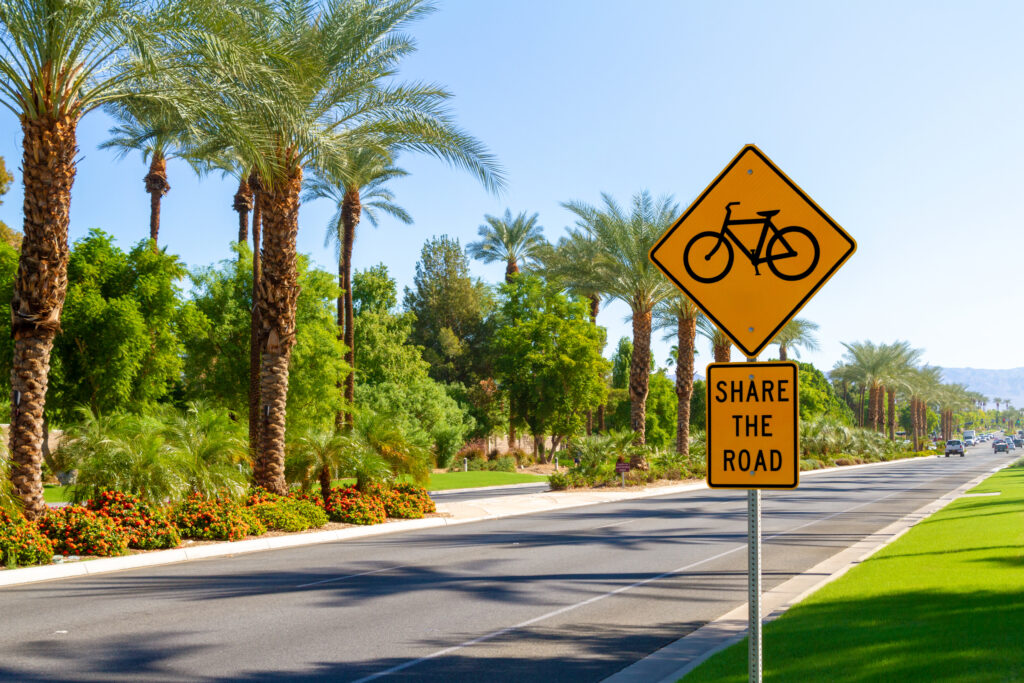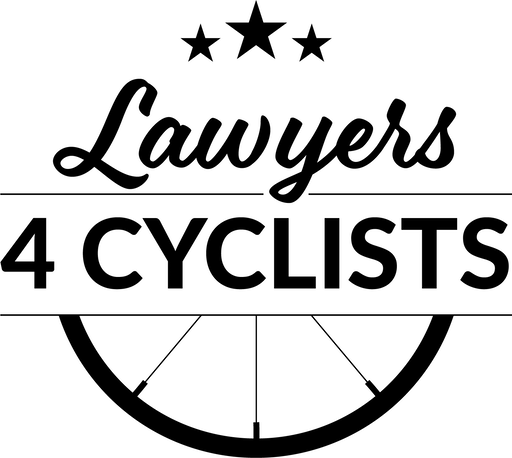Essential Guide to Uninsured Motorist Coverage for Cyclists

Uninsured motorist coverage offers added protection for cyclists against financial risks from drivers lacking sufficient insurance. On the road, cyclists face vulnerability, and accidents with uninsured or underinsured drivers can cause significant financial strain. It mitigates these risks by covering medical expenses, lost wages, and property damage.
There are two main types of uninsured motorist coverage that cyclists should be aware of: bodily injury and property damage coverage. Uninsured Motorist Bodily Injury (UMBI) coverage helps with medical expenses if a cyclist is injured by an uninsured driver, ensuring necessary medical attention without the full financial burden.
Property damage coverage aids in repairing or replacing a damaged bicycle, protecting the cyclist’s financial well-being.
Adding uninsured motorist coverage to an existing car insurance policy ensures cyclists have vital protection. This addition offers peace of mind, knowing they won’t face financial repercussions alone if an accident with an uninsured driver occurs. Additionally, it can extend to cover lost wages and other associated costs resulting from accidents.
Cycling Accidents in 2024: Key Trends and Safety Tips

Cycling accidents have been a growing concern, with approximately 850 reported bicyclist fatalities occurring annually in the U.S. This represents a significant increase, with bicyclist deaths rising by 42.7% since 2010. The trend has shown no signs of slowing down, highlighting the urgent need for improved bicycle safety measures, especially as bicyclist deaths occurred. Additionally, the total traffic fatalities provide a broader context, showing the overall severity of road safety issues and the need for comprehensive safety strategies.
Rising Toll: Bikers Killed Every Year and How to Improve Safety

In 2022, 1,105 bikers were killed every year while bicycling. This article looks at the statistics, major causes, and ways to improve biker safety, particularly in light of the alarming number of bikers killed every year. Key Takeaways Bicyclist fatalities reached a record high of 1,105 in 2022, highlighting a troubling upward trend since 2010. Motor vehicle collisions, particularly with light trucks, are the leading cause of cyclist deaths, with urban areas accounting for 83% of fatalities. Implementing safety measures such as improved infrastructure, helmet usage, and community engagement are crucial to reducing cyclist fatalities and enhancing overall safety. The increase in people bicycling for commuting and recreation has highlighted the need for improved safety measures. Annual Statistics of Bikers Killed by Fatal Injuries The numbers paint a sobering picture. In 2022, 1,105 bicyclists lost their lives in motor vehicle accidents, the highest recorded fatalities ever. This figure is part of a troubling trend. Bicyclist fatalities have shown a steady increase since 2010, peaking at 966 in 2021. The previous high before 2022 was 1,003, underscoring a consistent upward trajectory. These statistics are more than just numbers; they represent lives cut short and families devastated. In 2021 alone, bicyclists were involved in 2.2% of all traffic fatalities, a stark reminder of the vulnerability of those on two wheels. The average age of cyclists killed in these accidents was 49 years, indicating that this is not just an issue affecting young or inexperienced riders. According to data from the U.S. Census Bureau, the percentage of U.S. workers who travel to work by bicycle has shown fluctuations over the years, indicating changing trends in bicycling habits. The available data from the past decade calls for action. With increased urbanization and more people riding bicycles, the need for improved safety measures is pressing. The rise in fatalities highlights the urgent requirement for comprehensive strategies to protect cyclists. Common Causes of Fatal Bicycle Accidents Understanding the common causes of fatal bicycle accidents is crucial for developing effective prevention strategies. Collisions with motor vehicles often result in severe injuries or fatalities, frequently due to driver distraction, improper lane changes, or failure to yield. Cyclists face heightened risks in urban areas, where traffic density and congestion increase the likelihood of accidents. Additionally, helmet usage plays a crucial role in preventing fatal injuries. Each of these factors uniquely contributes to the overall risk profile for cyclists. Motor Vehicle Collisions Motor vehicle collisions are the leading cause of cyclist fatalities, with light trucks being particularly dangerous. In 2021, light trucks were responsible for 46% of bicyclist deaths. The sheer size and weight disparity between bicycles and motor vehicles put cyclists at a significant disadvantage, often leading to severe injuries or fatalities in the event of a crash. The statistics underline the need for improved safety measures to protect a cyclist injured from motor vehicle collisions. Driver distraction, fatigue, and improper lane changes commonly contribute to these tragic incidents. It’s clear that addressing these issues requires a multifaceted approach, including better driver education and stricter enforcement of traffic laws. Urban Area Risks Urban areas pose significant risks for cyclists, with a staggering 83% of cyclist fatalities occurring in these environments. The higher volume of traffic and congestion in cities contributes to increased rates of fatal bicycle injuries. In 2021, urban areas saw around 85% of bicyclist fatalities, up from 69% in 2011, highlighting a growing problem. The high traffic density and frequent interactions between vehicles and cyclists in urban settings create a dangerous environment. Enhancing urban infrastructure and reducing traffic congestion can significantly improve cyclist safety. Helmet Usage Helmet usage is crucial in preventing fatal injuries in bicycle accidents. Wearing a helmet can reduce the risk of severe head injuries by up to 73%. Despite this, data shows that 62% of bicyclists killed in 2022 were not wearing helmets, underscoring the importance of this simple yet effective measure. Helmets provide essential head protection, significantly decreasing the severity of injuries in a crash. Encouraging more cyclists to wear helmets could dramatically reduce fatalities and serious injuries. Risk Factors for Cyclists Several risk factors contribute to the high rate of cyclist fatalities. Most fatal crashes occur during dawn, dusk, or nighttime, accounting for 56% of all cases. Poor visibility during these times increases the risk. Additionally, adverse weather conditions can impair a cyclist’s control and decrease visibility, making it crucial to adapt speed and use reflective gear. Implementing safety measures like proper bike maintenance and wearing protective gear can significantly lower the chances of accidents and fatalities. Enhancing street lighting and ensuring cyclists are visible to drivers are crucial steps in reducing these risks. Impact of Speed Limits on Bicycle Safety Speed limits play a crucial role in bicycle safety. Reducing average vehicle speeds can lead to significantly fewer bicycle accidents and less severe injuries. A motor vehicle traveling at 25 mph poses a lower risk of serious injury to cyclists compared to one at 40 mph. Effective speed management strategies, such as lowering slower speed limits and implementing automated speed enforcement, can enhance safety for cyclists. The design of public roadways can also be modified to naturally calm traffic, further enhancing safety for cyclists. Reducing speed limits in busy areas can create safer environments that encourage more cycling and walking. Legal Aspects and Compensation for Families Families of cyclists killed in accidents have legal options to seek compensation. A wrongful death claim can cover funeral costs and the loss of financial support from the deceased. Compensation in bicycle accident lawsuits can also include medical expenses, lost income, pain and suffering, and property damages. Consulting a personal injury attorney can help victims and their families navigate the legal process and secure fair compensation. The clarity of fault in an accident significantly influences the potential settlement amount. Safety Measures to Reduce Fatalities Implementing safety measures is crucial to reducing cyclist fatalities. Adverse weather and lack of adequate safety equipment significantly raise the injury risk for cyclists in crashes. The following subsections
Top Tips for Cycling in the Rain: Stay Safer and Enjoy the Ride

Cycling in the rain can be challenging, but with the right preparation, it can also be enjoyable. In this article, we’ll provide you with essential tips and gear recommendations to stay safe, dry, and comfortable during wet weather rides.
Navigating Roadway Hazard Claims: A Step-by-Step Guide for Injured Cyclists in California

Attorneys specializing in dangerous roadway condition bicycle crashes- Lawyers 4 Cyclists
Cycling in the Grand Canyon State: Guide to New Arizona Bicycle Laws for 2024 and 2025

As Arizona continues to grow in popularity as a destination for cyclists, whether for recreation or commuting, state legislators and city governments have taken steps to ensure the safety and accessibility of bicycling on public roads. For 2024 and 2025, several new laws and proposed ordinances are designed to address emerging issues in cycling safety, road-sharing, and infrastructure development. This article provides a detailed overview of the latest legislative changes affecting cyclists across the state, as well as proposed local ordinances in major cities like Phoenix, Tucson, and Flagstaff.
Top Risks and Most Common Dangers of Cycling on the Road

Cycling on the road presents many dangers such as potholes, traffic interactions, and low visibility. To ride safely, it’s crucial to understand the most common dangers of cycling on the road and how to navigate them. This guide will help you identify these hazards and provide practical tips for safer cycling. Key Takeaways Common Road Hazards for Cyclists Cyclists face numerous risks from road hazards, which can stem from both environmental factors and human negligence. From potholes to road debris, and poorly maintained bike lanes, these hazards can cause significant injuries or damage to bicycles. Being aware of these dangers and knowing how to navigate them effectively ensures safer rides. Every cyclist should understand the specific types of hazards, such as potholes, debris, and inadequately maintained bike lanes. Each of these hazards requires different skills and awareness levels to avoid accidents. Let’s explore these common road hazards in more detail. Potholes and Uneven Surfaces Potholes can be particularly hazardous for cyclists, often leading to loss of control or severe injuries if not navigated carefully. Hitting a pothole unexpectedly can throw a cyclist off their bike, resulting in serious accidents. Cyclists should develop the skill to navigate around potholes to maintain bicycle safety. This includes staying alert and scanning the road ahead to avoid these dangerous obstacles. Debris on the Road Road debris, including loose materials like gravel and broken glass, poses critical hazards for cyclists and gravel bikes. These can puncture tires, leading to potentially dangerous falls and crashes. Remaining vigilant to notice and avoid such debris is crucial, as neglecting it can result in serious accidents and injuries. Poorly Maintained Bike Lanes Poorly maintained bike lanes can significantly increase the risk of accidents for cyclists. Issues like potholes, debris, and unclear road markings within bike lanes create unsafe conditions that can lead to falls and collisions. These lanes must be adequately maintained to ensure the safety of all cyclists on the road and the bike lane. Interactions with Motor Vehicles The greatest safety risk for cyclists is interactions with motor vehicles. Accidents involving vehicles are often underreported, so cyclists need to be extra cautious. Intersections, in particular, pose substantial risks, especially from turning vehicles that may not always see cyclists. Bicyclists are required to follow the same traffic laws as motorists, including obeying signals and road signs to ensure safety on the road. Cyclists can navigate traffic more safely by understanding the dangers posed by vehicle blind spots, dooring incidents, and close passes. Each of these scenarios requires specific awareness and strategies to avoid accidents. Let’s delve into these common interactions and how to manage them effectively. Vehicle Blind Spots Large vehicles, such as trucks and buses, have extensive blind spots that can put cyclists at significant risk. These blind spots can obscure cyclists from drivers’ views, making collisions more likely. Awareness of these areas and avoiding them whenever possible helps cyclists stay safer. Dooring Incidents Dooring incidents occur when a motorist opens a car door into a cyclist’s path, posing a severe danger. Such incidents often result in severe injuries as cyclists collide with the suddenly opened door. Drivers should check their mirrors before opening doors to prevent these accidents, and cyclists should ride at a safer distance from parked cars. Close Passes Vehicles passing too closely to cyclists pose a significant threat to their safety. Insufficient space when vehicles overtake cyclists can lead to dangerous situations and increase the likelihood of collisions. Motorists should give cyclists ample space when passing to ensure their safety on the road. Navigating Intersections Intersections are high-risk areas for cyclists, with a significant number of collisions occurring in these zones. Right-hook and left-hook collisions are particularly prevalent, happening when vehicles turn across the path of cyclists. Familiarity with traffic signs and signals helps cyclists navigate intersections safely and reduce their risk of accidents. To minimize the risk of collisions at intersections, cyclists should continuously scan for traffic and signal their intentions clearly. Understanding the types of collisions and how to avoid them significantly enhances cyclist safety at these critical points. Right-Hook and Left-Hook Collisions Right-hook collisions occur when a vehicle turns right across the path of an oncoming cyclist, often leading to serious injuries. These collisions typically happen when a vehicle passes a cyclist and then turns right, misjudging the cyclist’s speed or location. Left-hook collisions, on the other hand, occur when a vehicle turns left into the path of a cyclist, often leading to severe accidents. Being vigilant at intersections and signaling intentions helps cyclists avoid dangerous situations. Misunderstood Traffic Signs and Signals Cyclists must understand traffic signals to navigate intersections safely and avoid accidents. Failure to recognize or misinterpret traffic signs can lead to dangerous situations. Cyclists must follow traffic signals closely to ensure their safety and prevent collisions with vehicles. Night Riding and Low Visibility Cycling at night significantly increases the risk of accidents due to lower visibility conditions. Reduced visibility for both cyclists and motorists can lead to dangerous situations. Adopting safer behaviors and practices enhances cyclists’ visibility and predictability on the road. Using a road bike for night riding can be effective, but it is crucial to ensure proper visibility. To improve safety during night rides, cyclists should wear bright clothing and use lights to make themselves more visible to drivers. Additionally, adverse weather conditions like rain and fog can further impair visibility, making it essential for cyclists to adjust their riding techniques accordingly. Importance of Bright Clothing and Lights Bright colors and reflective gear enhance visibility to motorists when riding at night. Front and rear lights on a bicycle ensure that cyclists are seen by others on the road. Reflective gear and bright clothing significantly enhance a cyclist’s visibility, helping to prevent accidents in low-light conditions. Weather Conditions Adverse weather conditions like rain and fog can severely impair visibility, heightening the dangers for cyclists. Cyclists should adjust their riding strategies in such conditions to maintain safety. This includes slowing down, using lights, and wearing appropriate


